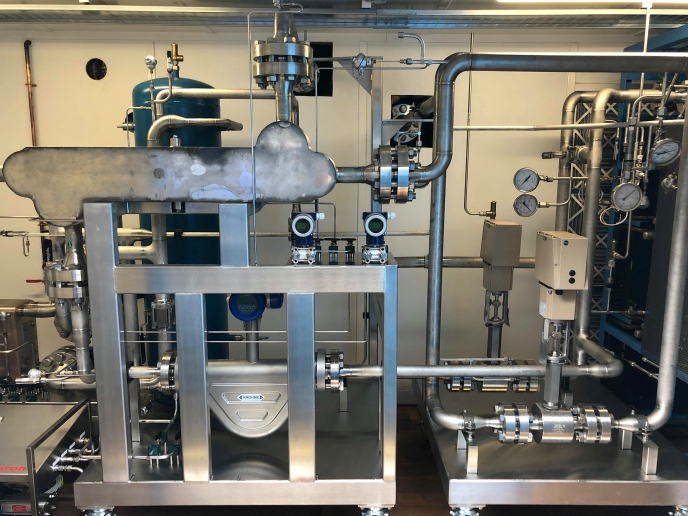Whether warm like a summer day or hot as lava, industrial waste heat will be wasted no more
Energy regulations are increasing in stringency with the goals of driving down emissions and enhancing sustainability and energy security. Waste heat recovery systems can offset the energy required by industries for their processes and, if not needed, can also be exported to electrical or heat distribution networks. The EU-funded I-ThERM project set out to develop innovative plug-and-play waste heat recovery and conversion solutions with energy recovery potential across the temperature spectrum from 70 to 1 000 °C. The technologies will help Europe reduce its industrial energy consumption and emissions while also increasing its competitive position in numerous industries and in the large global waste heat recovery market.
A portfolio of plug-and-play products
Savvas Tassou, project coordinator and Director of the Institute of Energy Futures, Brunel University London, explains: “I-ThERM designed two heat recovery technologies for operating temperatures between 200 and 1 350 °C, and developed two heat-to-power technologies with operating temperatures between 70 and 1 000 °C. All four technologies are supported with continuous monitoring of key performance parameters and real-time automatic adjustment.” The project also updated the EINSTEIN toolkit that enables quick assessment of the feasibility and economics of waste heat recovery and utilisation to include I-ThERM technologies. I-ThERM’s heat pipe condensing economiser (200-500 °C) is designed to increase the efficiency of heat recovery from boilers and other combustion exhausts. It can recover 10-25 % more energy than non-condensing economisers and is particularly well-suited to “dirty” and acidic exhausts in the petrochemical, cement, glass, steel and food industries. The iron and steel industry could benefit tremendously from the flat heat pipe system (FHPS) designed to recover radiant heat from products cooling on a conveyor from a temperature of 1 350 °C down to 300 °C. The trilateral flash cycle (TFC) system is suitable for heat-to-power conversion from low-temperature waste heat streams (70-200 °C), particularly in the food and drink, pulp and paper, petrochemical and metal industries. The TFC system enables higher heat recovery potential and higher power output per unit heat input than conventional organic Rankine cycle systems. Finally, Tassou states, “the supercritical CO2 (sCO2) waste heat-to-power cycle is a unique technology and the first complete system to be operational in Europe. This technology targets high-temperature waste heat (400-1 000 °C) in the steel, cement, glass and petrochemical industries.” Electrical power output of the TFC and sCO2 technologies are 100 kilowatt-electric (kWe) and 50 kWe, respectively.
Innovation that gets noticed
Three of the four technologies were picked up by the European Commission’s Innovation Radar, which identifies the most promising innovations and the innovators behind them and provides expert advice on reaching the market. Its goal is “creating a steady flow of promising tech companies that can scale up into future industrial champions,” and I-ThERM’s consortium is among them. Savvas summarises: “The FHPS, TFC and sCO2 technologies are completely new, currently without direct competition and have been recognised by the Innovation Radar as having high market potential. The project has already led to significant interest in the TFC and sCO2 technologies in Europe.” For numerous industries in Europe and beyond, 'waste' heat may soon be a misnomer.
Keywords
I-ThERM, waste heat, energy, waste heat recovery, sCO2, Innovation Radar, EINSTEIN, heat pipe condensing economiser, flat heat pipe system, trilateral flash cycle, organic Rankine cycle, supercritical CO2



